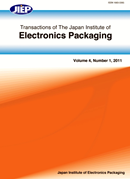Volume 16
Displaying 1-9 of 9 articles from this issue
- |<
- <
- 1
- >
- >|
Preface
-
Article type: Preface
2023 Volume 16 Pages Pref01_1
Published: 2023
Released on J-STAGE: January 15, 2024
Download PDF (446K)
Technical Papers
-
Article type: Technical Paper
2023 Volume 16 Pages E22-004-1-E22-004-5
Published: 2023
Released on J-STAGE: April 26, 2023
Download PDF (782K) -
Article type: Technical Paper
2023 Volume 16 Pages E21-018-1-E21-018-7
Published: 2023
Released on J-STAGE: April 26, 2023
Download PDF (631K) -
Article type: Technical Paper
2023 Volume 16 Pages E22-005-1-E22-005-8
Published: 2023
Released on J-STAGE: June 02, 2023
Download PDF (1213K) -
Article type: Technical Paper
2023 Volume 16 Pages E22-003-1-E22-003-9
Published: 2023
Released on J-STAGE: July 01, 2023
Download PDF (1561K) -
Article type: Technical Paper
2023 Volume 16 Pages E22-006-1-E22-006-8
Published: 2023
Released on J-STAGE: August 19, 2023
Download PDF (689K) -
Article type: Technical Paper
2023 Volume 16 Pages E23-001-1-E23-001-13
Published: 2023
Released on J-STAGE: August 19, 2023
Download PDF (3487K) -
Article type: Technical Paper
2023 Volume 16 Pages E23-007-1-E23-007-6
Published: 2023
Released on J-STAGE: December 22, 2023
Download PDF (1819K) -
Article type: Technical Paper
2023 Volume 16 Pages E23-005-1-E21-005-11
Published: 2023
Released on J-STAGE: December 22, 2023
Download PDF (2441K)
- |<
- <
- 1
- >
- >|
